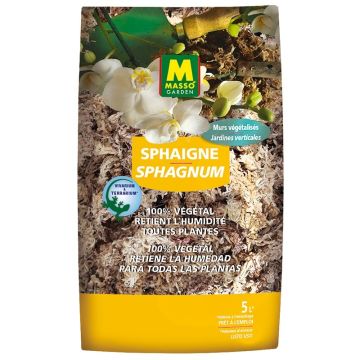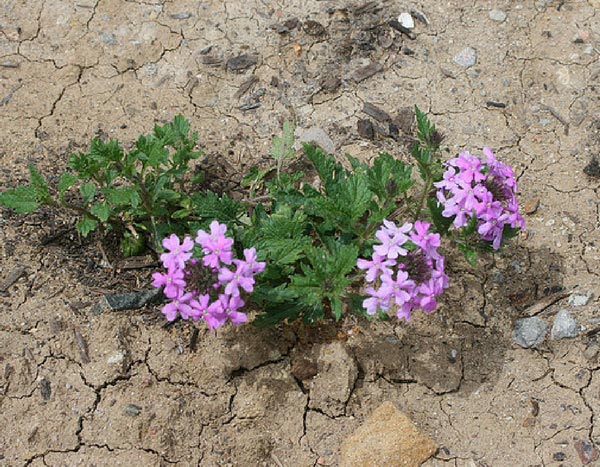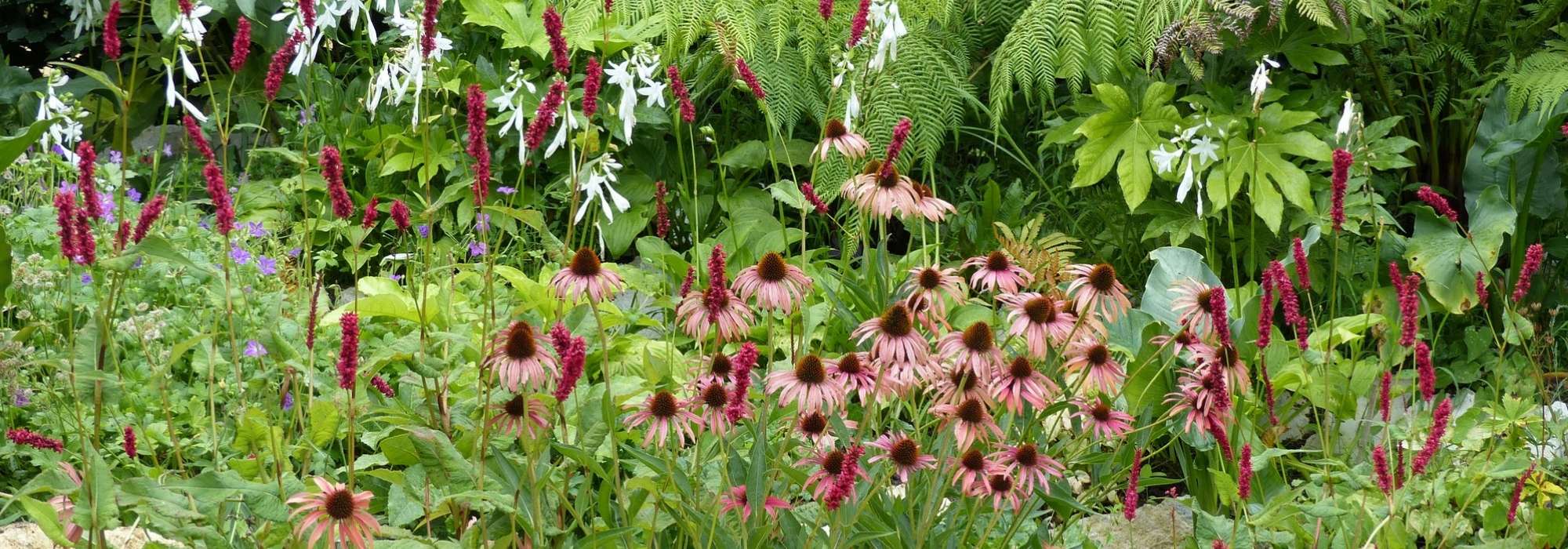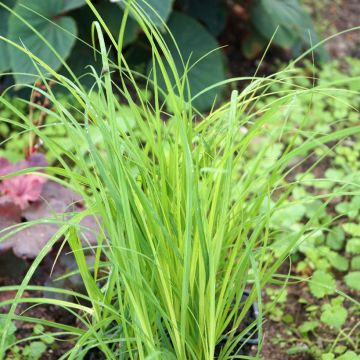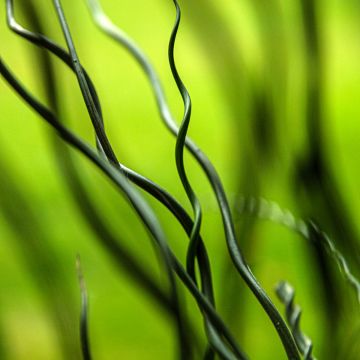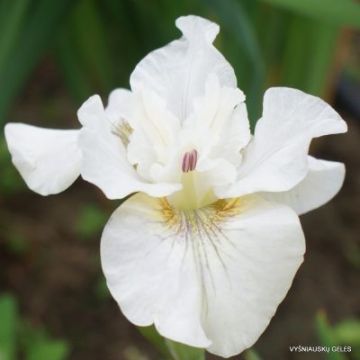

Nelumbo nucifera White - Sacred Lotus
Nelumbo nucifera White - Sacred Lotus
Nelumbo nucifera White (Blanc)
Sacred Lotus, Indian Lotus, Lotus
Special offer!
Receive a €20 voucher for any order over €90 (excluding delivery costs, credit notes, and plastic-free options)!
1- Add your favorite plants to your cart.
2- Once you have reached €90, confirm your order (you can even choose the delivery date!).
3- As soon as your order is shipped, you will receive an email containing your voucher code, valid for 3 months (90 days).
Your voucher is unique and can only be used once, for any order with a minimum value of €20, excluding delivery costs.
Can be combined with other current offers, non-divisible and non-refundable.
Why not try an alternative variety in stock?
View all →This plant carries a 12 months recovery warranty
More information
We guarantee the quality of our plants for a full growing cycle, and will replace at our expense any plant that fails to recover under normal climatic and planting conditions.
Does this plant fit my garden?
Set up your Plantfit profile →
Description
The Nelumbo nucifera 'White', or White Sacred Lotus, is a large and beautiful aquatic perennial, adorned with its nearly round leaves held well above the water surface and its long white, double summer flowering. This lotus should be planted at a minimum depth of 1m to protect it from harsh winters. Alternatively, the rhizome can be lifted from the water in autumn and stored in frost-free conditions, in slightly damp mud.
The 'White' Lotus is a perennial plant belonging to the Nelumbonaceae family. It is an aquatic plant with foliage and flowers that rise above the water, unlike water lilies. The native range of the species, Nelumbo nucifera, includes Southeast Asia and Northern Australia. In these regions, it thrives in large ponds and muddy canals, standing out with majestic beauty.
The 'White' variety produces blue-green leaves that emerge in spring, more or less upright, with a flat or concave surface and slightly undulate edges. Water droplets on their surface bead up instead of spreading, due to the hydrophobic nature of the epidermis. The entire and peltate lamina, measuring between 40 and 60 cm in diameter, attaches to the very brittle rhizome via a slender spiny petiole, fixed below the centre of the leaf. The plant will rise 1 to 2m above the water surface. The flowering period starts in June-July and continues until autumn. The flowers, with crumpled texture, measuring 13-15 cm in diameter, are solitary. They last for several days before wilting and are replaced by new flower buds. This flowering is followed by the formation of highly decorative fruits shaped like a watering can with small holes through which the mature seeds escape. It is often used in dried flower arrangements and contains numerous seeds that will eventually sink and germinate in the mud.
The Lotus is ideal for large water plantings, but it can also be grown in a large watertight container to adorn the terrace or balcony.
Lotus and water lilies will be the main attractions in your pond plantings. Most of them bloom from spring until early autumn. The lotus is also an essential plant for maintaining a balanced garden pond, as it contributes to water oxygenation. Its leaves provide shade and shelter for your fish, which in turn protect them from predatory insects like aphids.
The entire plant is edible. The seeds are consumed candied, and the rhizome is a nutritious starch. The yellow stamens are used to flavour tea in Vietnam. The rhizome and seeds are also used in Chinese cosmetics to combat ageing, as well as in medicine and perfumery.
The perfection of the flower and fruit of the sacred lotus (Nelumbo nucifera) has made this aquatic plant a symbol of purity in several religions. In Buddhism, it is considered sacred because it is believed that Buddha appeared floating on a lotus leaf. In Hinduism, it is seen as the cradle of the universe.
Report an error about the product description
Flowering
Foliage
Plant habit
Botanical data
Nelumbo
nucifera
White (Blanc)
Nelumbonaceae
Sacred Lotus, Indian Lotus, Lotus
Nymphaea nelumbo, Nelumbo caspica, Nelumbo speciosum, Nelumbo nelumbo, Nelumbo komarovii
Cultivar or hybrid
Other Nelumbo - Lotus
View all →Planting and care
Apart from a few precautions, the cultivation of this mysterious flower does not require any special arrangements. The sacred lotus requires a sunny location. It can tolerate temperatures as low as -12°C, as long as it is submerged under 1m of water. Plant the rootstock without breaking it, horizontally, in late spring in a pot or directly in the mud, at least 30cm below the water surface. Bury the stump under 20cm of rich loam or clay (never use potting soil, as it would float to the surface and promote the growth of algae). For shallow ponds, planting in a container is possible, but it will be necessary to overwinter the rootstock in damp sand, protected from frost. The rootstock can be planted in a wicker basket or a fine wire mesh basket, with a diameter of 40cm (wider than it is tall), which is then sunk to the desired location. Provide them with the sunniest spot in the water feature. Space each rootstock at least 2m apart.
In regions with harsh winters, you can keep the rootstock in a moist pot protected from frost from October to May.
The Nelumbo rootstock should never be exposed to sunlight or air to prevent them from drying out; plant them as soon as you receive or purchase them. If you have fish in your pond, it is advisable to spread a layer of coarse gravel on the surface of the planted pot to discourage them from digging in the soil and polluting the water. The growth of lotus plants will be optimal if they are planted in containers suitable for their growth. Lotuses are hungry plants: apply a balanced slow-release fertiliser at planting, and then every year at the beginning of the growing season (for example: Osmocote 10-11-18-2 with a duration of 5-6 months). During the summer, remove any excessive leaves that grow in the centre of the clump and keep only the most vigorous ones. Also remove any yellowed or stained leaves, as well as aquatic weeds that emerge from the surface. Be careful, contact with lotus foliage can cause allergies!
Monitor aphid infestations on the foliage. Introduce ladybug larvae or spray the foliage with black soap. Remove yellowed leaves at the end of summer.
Planting period
Intended location
Care
Planting & care advice
This item has not been reviewed yet - be the first to leave a review about it.
Similar products
Haven't found what you were looking for?
Hardiness is the lowest winter temperature a plant can endure without suffering serious damage or even dying. However, hardiness is affected by location (a sheltered area, such as a patio), protection (winter cover) and soil type (hardiness is improved by well-drained soil).

Photo Sharing Terms & Conditions
In order to encourage gardeners to interact and share their experiences, Promesse de fleurs offers various media enabling content to be uploaded onto its Site - in particular via the ‘Photo sharing’ module.
The User agrees to refrain from:
- Posting any content that is illegal, prejudicial, insulting, racist, inciteful to hatred, revisionist, contrary to public decency, that infringes on privacy or on the privacy rights of third parties, in particular the publicity rights of persons and goods, intellectual property rights, or the right to privacy.
- Submitting content on behalf of a third party;
- Impersonate the identity of a third party and/or publish any personal information about a third party;
In general, the User undertakes to refrain from any unethical behaviour.
All Content (in particular text, comments, files, images, photos, videos, creative works, etc.), which may be subject to property or intellectual property rights, image or other private rights, shall remain the property of the User, subject to the limited rights granted by the terms of the licence granted by Promesse de fleurs as stated below. Users are at liberty to publish or not to publish such Content on the Site, notably via the ‘Photo Sharing’ facility, and accept that this Content shall be made public and freely accessible, notably on the Internet.
Users further acknowledge, undertake to have ,and guarantee that they hold all necessary rights and permissions to publish such material on the Site, in particular with regard to the legislation in force pertaining to any privacy, property, intellectual property, image, or contractual rights, or rights of any other nature. By publishing such Content on the Site, Users acknowledge accepting full liability as publishers of the Content within the meaning of the law, and grant Promesse de fleurs, free of charge, an inclusive, worldwide licence for the said Content for the entire duration of its publication, including all reproduction, representation, up/downloading, displaying, performing, transmission, and storage rights.
Users also grant permission for their name to be linked to the Content and accept that this link may not always be made available.
By engaging in posting material, Users consent to their Content becoming automatically accessible on the Internet, in particular on other sites and/or blogs and/or web pages of the Promesse de fleurs site, including in particular social pages and the Promesse de fleurs catalogue.
Users may secure the removal of entrusted content free of charge by issuing a simple request via our contact form.
The flowering period indicated on our website applies to countries and regions located in USDA zone 8 (France, the United Kingdom, Ireland, the Netherlands, etc.)
It will vary according to where you live:
- In zones 9 to 10 (Italy, Spain, Greece, etc.), flowering will occur about 2 to 4 weeks earlier.
- In zones 6 to 7 (Germany, Poland, Slovenia, and lower mountainous regions), flowering will be delayed by 2 to 3 weeks.
- In zone 5 (Central Europe, Scandinavia), blooming will be delayed by 3 to 5 weeks.
In temperate climates, pruning of spring-flowering shrubs (forsythia, spireas, etc.) should be done just after flowering.
Pruning of summer-flowering shrubs (Indian Lilac, Perovskia, etc.) can be done in winter or spring.
In cold regions as well as with frost-sensitive plants, avoid pruning too early when severe frosts may still occur.
The planting period indicated on our website applies to countries and regions located in USDA zone 8 (France, United Kingdom, Ireland, Netherlands).
It will vary according to where you live:
- In Mediterranean zones (Marseille, Madrid, Milan, etc.), autumn and winter are the best planting periods.
- In continental zones (Strasbourg, Munich, Vienna, etc.), delay planting by 2 to 3 weeks in spring and bring it forward by 2 to 4 weeks in autumn.
- In mountainous regions (the Alps, Pyrenees, Carpathians, etc.), it is best to plant in late spring (May-June) or late summer (August-September).
The harvesting period indicated on our website applies to countries and regions in USDA zone 8 (France, England, Ireland, the Netherlands).
In colder areas (Scandinavia, Poland, Austria...) fruit and vegetable harvests are likely to be delayed by 3-4 weeks.
In warmer areas (Italy, Spain, Greece, etc.), harvesting will probably take place earlier, depending on weather conditions.
The sowing periods indicated on our website apply to countries and regions within USDA Zone 8 (France, UK, Ireland, Netherlands).
In colder areas (Scandinavia, Poland, Austria...), delay any outdoor sowing by 3-4 weeks, or sow under glass.
In warmer climes (Italy, Spain, Greece, etc.), bring outdoor sowing forward by a few weeks.

































